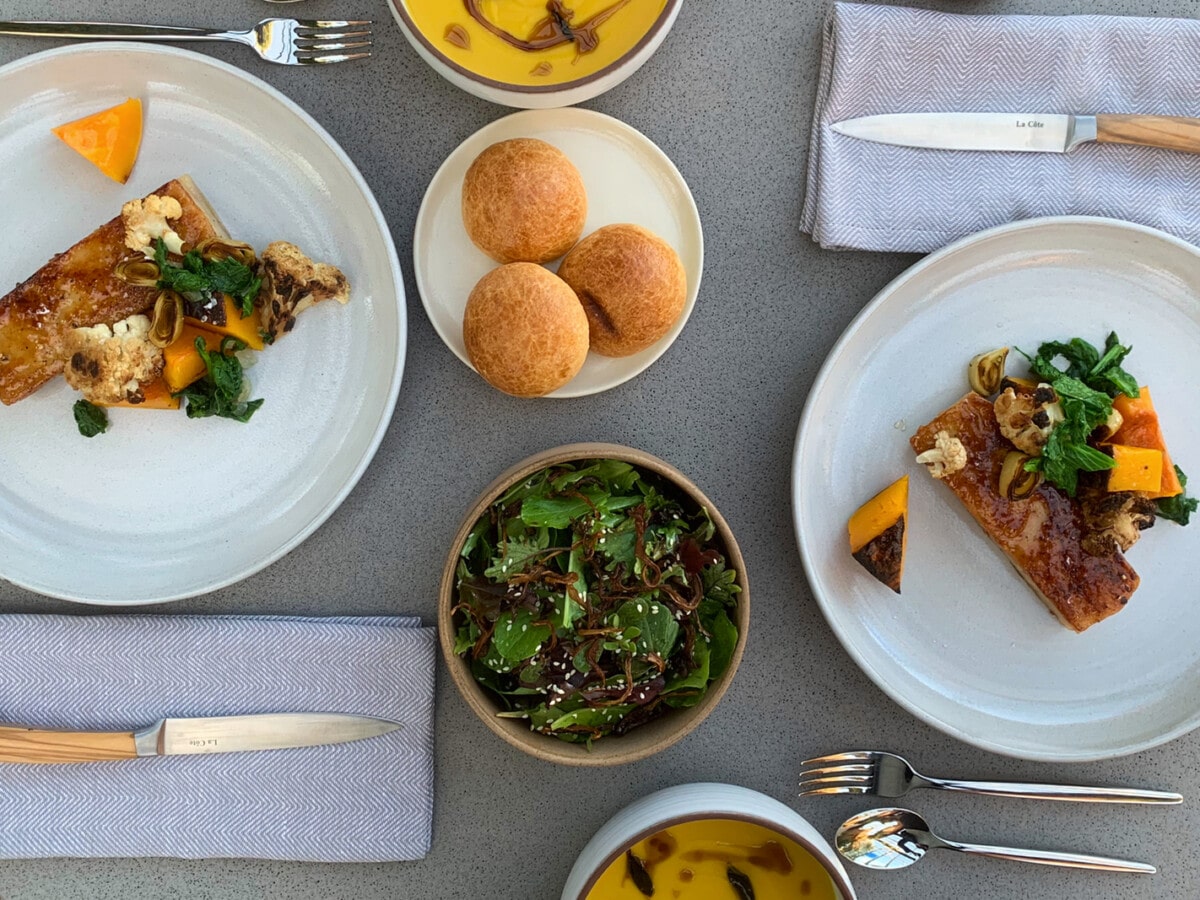A pop of the cork. The fine bubbles tickling their way to the surface. There is something almost magical about a glass of sparkling wine. We don’t associate a sound with any other wine. But it’s so much more than the sound. It’s those tiny bubbles and the taste that kicks our palates into high gear. It’s a celebration in a glass.
More than a decade ago, I sat down to chat with the French manager of Vineyard at Stockcross. He greeted me with a glass of Champagne. His toast has remained with me: “There is never a bad time for bubbles.” This was an amazing moment for me—a wow moment. I didn’t have to wait for a special occasion. Life is too short to not drink bubbles.
There are many different types of sparkling wines—Champagne, Prosecco, Cava, Sekt, and more. In this 5-part series, I cover my favorite sparkling wines from around the world and offer guides so you can pick which ones you want to try. Because now is the best time for a glass of bubbly.

Champaign being poured into glasses. Photo by bluefern via iStockPhoto
What's in This Article:
My Favorite Sparkling Wines Series on Wander
In this first article, we talk about the process behind making sparkling wine. Be sure to check out the other articles in the series and get recommendations for some of my favorite sparkling wines from around the world:
- French Sparkling Wines (including Champagne)
- Spanish Sparkling Wines
- Italian Sparkling Wines
- American Sparkling Wines
What is Sparkling Wine?
Sparkling wine began back during Roman times, but quite by accident. The residents of Champagne made wines that, to their dismay at the time, were effervescent. Slightly bubbly. The fine residents of Champagne were concerned. Why didn’t their neighbors in Burgundy have this same “problem”?
In reality, the Champagne region simply has cooler temperatures than surrounding areas. The winemakers would create and bottle their juice in the fall and begin the fermentation process. Winter would come and halt that process. Then, as spring brought warmer days, the wine would start to bubble, signaling the beginning of a second fermentation. This causes the effervescence that the winemakers in Champagne were, in the beginning, trying to eliminate.

Vineyard landscape, Montagne de Reims, France. Photo by artJazz via iStockPhoto
As time went along, and the Champagne winemakers began to ship their wines to British merchants, there was another change. It was the beginning of the Industrial Revolution and the British had plenty of glass available. When they received shipments from France, they would remove the wine from the barrels and place it in bottles. But not before adding some sugar, because the British liked sweeter wines than the French. Once sealed, that sugar would cause the wine to ferment more and when opened, there was a pop. So, I always laugh that Champagne is a French product with a bit of British engineering thrown in.
How Do You Make Sparkling Wine?
There are two basic ways of making sparkling wine: méthode Champenoise (the Champagne method) and Charmat or Metodo Italiano (the Italian method). In the méthode Champenoise, the second fermentation takes place in a bottle, while that second fermentation takes place in a stainless steel or oak tank in the Charmat method.
I will admit that my favorite sparkling wines are those created using the méthode Champenoise, but I have tasted some lovely sparkling wines created using the Charmat method.
With more than 3 billion bottles of sparkling wines made around the world each year, there are plenty of options from which you can choose.

Waiter serving a glass of sparkling white wine. Photo by Poike via iStockPhoto
Understanding the Méthode Champenoise
The process of making sparkling wine is fascinating. During fermentation, yeast converts the sugar to alcohol. In the méthode Champenoise, the growers harvest the grapes each fall and the first fermentation takes place, usually in large tanks or barrels, preferably oak.
The next process is what makes the Méthode Champenoise so unique. The winemakers begin a process called assemblage. During this process, which begins in spring, they blend up to 40 different lots of the juice (which is still wine at this point) that has gone through four or five months of fermentation with reserve wines from earlier years. Once the blend is exactly as the winemaker wants, the blend goes into bottles for the second fermentation, along with what is known as a dosage. The dosage is a mixture of base wine, yeast, and sugar.
During the fermentation, bottles are turned, known as riddling (remuage in French). Gradually during this riddling process, which must be at least 15 months in Champagne but can be as little as nine months for some sparkling wines created in the traditional method, the wines go from horizontal to almost upside down. At this point, the sediment (lees) gathers against the top, in the neck. This time on the lees is carefully regulated in Champagne and in some other sparkling wine production, including Spanish Cava.

Bottles of sparkling wine during riddling in the Champenoise method. Photo by OrleiJr via iStockPhoto
When it is time, the winemaker quickly freezes the end, and dégorgement occurs. In this process, the winemaker breaks the bottle to remove the frozen plug (and the yeast). The wine is then placed in the final bottle, corked, and continues to rest in the bottle.
In some countries, a wine that goes through this méthode Champenoise is called metodo tradizionale, metodo classico, or traditional method.
Understanding the Charmat Method or Metodo Italiano
In the Charmat or Metodo Italiano, the wine goes through the first fermentation and then goes into stainless steel or oak tanks. While in the tanks, the winemaker adds sugar and yeast to help with the second fermentation. After the second fermentation in the tanks, the wines are bottled and corked. This is a popular method for Prosecco.
Why is Rosé Pink?
My favorite sparkling wines are rosé. These are more complex, full-bodied sparkling wines. Most rosé sparklers are more expensive than their white sparkling counterparts.

Two glasses of rosé Champagne. Photo by y-studio via iStockPhoto
There are two primary ways for creating rosé wines:
- Saignée is the oldest method. In the saignée method, the pinot noir (red grapes) skins come into contact with the base wine long enough to tint the wine a pink color.
- Blending is when the winemaker adds a small amount of Pinot Noir wine into the bottle before the second fermentation.
There is always a major discussion about which is best, but both are acceptable ways to make rosé. Traditionally, rosé was not popular in Champagne. Some winemakers felt it was somehow cheating the system to color the wines. That is no longer the case and it grows in popularity all the time.
How Sweet is Sparkling Wine?
When people hear terms like Brut Champagne, they think of dry wine. Then, they hear about adding sugar and imagine sweet wines. Like other types of wines, sparkling wines can run the range.

Champagne Taittinger during a tasting in Champagne, France. Photo by Susan Lanier-Graham
To help you understand how to read those labels and to help determine what might be best for you, here are the levels of sweetness you find in sparkling wines:
- Brut Nature. This has a dosage of fewer than 3 grams of sugar per liter, or 0.3% sugar.
- Extra-Brut. This has up to 6 grams of sugar per liter, ranging from 0 to 0.6% sugar.
- Brut. This is the most common for Champagnes. It has a dosage of fewer than 12 grams of sugar per liter, or less than 1.2% sugar. Most Champagnes have a dosage between 9 and 10 grams, so just under 1% sugar.
- Extra-Dry. A little sweeter than brut, extra-dry has a dosage of 12 to 17 grams of sugar per liter, with 1.7 to 3.2% sugar.
- Demi-sec. Has a dosage of 32 to 50 grams of sugar per liter, with 3.2 to 5% sugar.
- Sweet or Doux. This has more than 50 grams of sugar per liter, with a 5% sugar content.
There is no right or wrong for sparkling wines. You should choose what best suits your own taste and preference.
How to Drink Sparkling Wine
While there is no exact way to drink sparkling wines, there are a few guidelines that help you get the most out of your sparkler.
Ensure that you always drink sparkling wine well chilled. The best way is to have a bucket with ice and water and chill it for 20 to 40 minutes. Once well-chilled, then it is time to open the bottle.

Moët & Chandon chilling. Photo by Susan Lanier-Graham
Do not shake the bottle. This only destroys the wine, because it will overflow and go all over the room. What a waste! Instead, remove the foil, and grab or towel. Untwist the metal ring on the cage about six times, putting your hand on the cork so it doesn’t pop too soon. While holding the cork, slowly twist the bottle to loosen the cork. You want to go slowly, remembering that there is a lot of pressure inside the bottle.

Cork from a bottle of sparkling wine. Photo via iStockPhoto
Once it is open, then you want to pour it into your glass. But—is there a right or wrong glass for sparkling wine? While you don’t necessarily have to use expensive glasses for sparkling wine, the shape of the glass really does make a difference in the flavor. You want to use a tall champagne glass so that the bubble can come to the surface in a long spiral. The ideal glass has a wider spot around the middle so that you get the best aroma when you sip. I recommend Riedel Performance Champagne glass. This is the glass I use most often.

Bollinger Special Cuvée 007 Limited Edition in my favorite Riedel Performance Champagne glass. Photo by Susan Lanier-Graham
Do not use the traditional, wide champagne coupe that you used to see at weddings. The bubbles quickly disappear in those, leaving your sparkling wine flat. Sparkling wine is exciting because of those vibrant bubbles.
We help you discover just what sparkling wines are available in the next four parts of this series. Read on about French sparkling wines, including champagnes, in Part 2 of my series about my favorite sparkling wines. If you are looking for a good sparkling wine club, I recommend checking out Vinesse. Want more information about wine? We have more great wine recommendations on Wander.





0 Comments